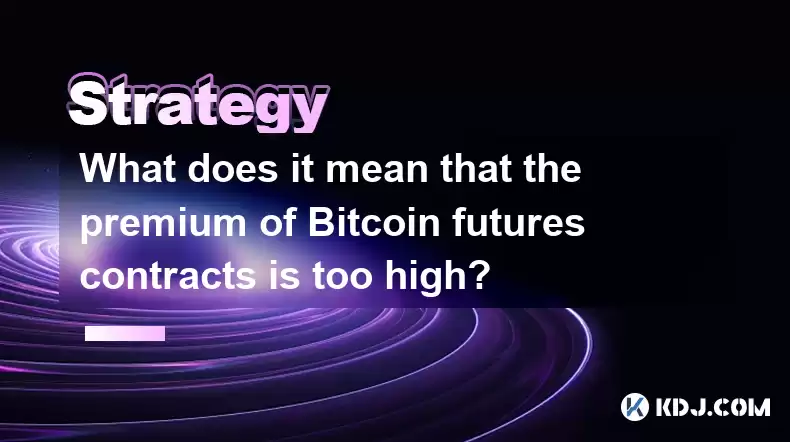-
 Bitcoin
Bitcoin $115100
1.27% -
 Ethereum
Ethereum $3675
2.71% -
 XRP
XRP $2.995
1.45% -
 Tether USDt
Tether USDt $1.000
0.02% -
 BNB
BNB $769.8
2.64% -
 Solana
Solana $168.0
3.25% -
 USDC
USDC $0.9999
-0.01% -
 TRON
TRON $0.3371
1.48% -
 Dogecoin
Dogecoin $0.2051
3.36% -
 Cardano
Cardano $0.7394
2.30% -
 Hyperliquid
Hyperliquid $38.15
0.42% -
 Stellar
Stellar $0.3966
-0.36% -
 Sui
Sui $3.486
2.93% -
 Chainlink
Chainlink $16.72
2.52% -
 Bitcoin Cash
Bitcoin Cash $568.0
4.36% -
 Hedera
Hedera $0.2440
2.59% -
 Ethena USDe
Ethena USDe $1.001
0.04% -
 Avalanche
Avalanche $22.16
2.06% -
 Litecoin
Litecoin $119.1
-0.73% -
 UNUS SED LEO
UNUS SED LEO $8.991
0.04% -
 Toncoin
Toncoin $3.232
-0.39% -
 Shiba Inu
Shiba Inu $0.00001233
2.82% -
 Uniswap
Uniswap $9.717
2.53% -
 Polkadot
Polkadot $3.664
1.85% -
 Dai
Dai $1.000
0.01% -
 Monero
Monero $281.2
-3.89% -
 Bitget Token
Bitget Token $4.350
1.55% -
 Cronos
Cronos $0.1428
5.07% -
 Pepe
Pepe $0.00001050
3.68% -
 Aave
Aave $262.3
3.54%
What does it mean that the premium of Bitcoin futures contracts is too high?
A high premium on Bitcoin futures indicates strong bullish sentiment but can lead to increased volatility and arbitrage opportunities in the market.
Apr 20, 2025 at 07:28 pm

What does it mean that the premium of Bitcoin futures contracts is too high?
Bitcoin futures contracts are financial derivatives that allow investors to speculate on the future price of Bitcoin without actually owning the cryptocurrency. The premium of a futures contract refers to the difference between the current market price of Bitcoin and the price at which the futures contract is trading. When the premium of Bitcoin futures contracts is described as being "too high," it indicates a significant divergence between the spot price of Bitcoin and the futures price. This phenomenon can have several implications for traders and the broader cryptocurrency market.
Understanding the Basics of Bitcoin Futures Contracts
To fully grasp what it means when the premium of Bitcoin futures contracts is too high, it's essential to understand the basics of these financial instruments. Bitcoin futures contracts are agreements to buy or sell Bitcoin at a predetermined price on a specified future date. These contracts are traded on regulated exchanges like the Chicago Mercantile Exchange (CME) and the Chicago Board Options Exchange (CBOE).
- Spot Price vs. Futures Price: The spot price is the current market price of Bitcoin, while the futures price is the price at which the contract is trading. The premium is the difference between these two prices.
- Contango and Backwardation: When the futures price is higher than the spot price, the market is said to be in contango. Conversely, when the spot price is higher than the futures price, the market is in backwardation. A high premium typically indicates a contango market.
Implications of a High Premium on Bitcoin Futures Contracts
A high premium on Bitcoin futures contracts can have several implications for market participants and the overall market dynamics.
- Market Sentiment: A high premium often reflects bullish sentiment among investors, as they are willing to pay more for the future delivery of Bitcoin than its current market price. This can indicate strong demand and expectations of price appreciation.
- Arbitrage Opportunities: Traders can exploit the difference between the spot and futures prices through arbitrage strategies. If the premium is too high, arbitrageurs may buy Bitcoin at the spot price and simultaneously sell futures contracts, aiming to profit from the convergence of prices at the contract's expiration.
- Increased Volatility: A significant premium can contribute to increased volatility in the Bitcoin market. As the futures market influences the spot market, large premiums can lead to price swings as traders adjust their positions.
Factors Contributing to a High Premium
Several factors can contribute to a high premium on Bitcoin futures contracts.
- Liquidity and Market Depth: If the futures market has lower liquidity compared to the spot market, it can result in higher premiums. Limited liquidity can cause larger price discrepancies between the two markets.
- Regulatory Environment: The regulatory environment surrounding Bitcoin and futures trading can impact premiums. Restrictions or uncertainties can lead to higher premiums as investors factor in potential risks.
- Institutional Participation: The involvement of institutional investors in the futures market can drive premiums higher. Institutional traders often have different risk appetites and investment horizons compared to retail investors, influencing the futures prices.
How Traders Can Respond to a High Premium
Traders and investors can employ various strategies to navigate a market where the premium on Bitcoin futures contracts is too high.
- Hedging: Investors holding Bitcoin can use futures contracts to hedge against potential price declines. By selling futures contracts, they can lock in a future selling price, mitigating the risk of a high premium.
- Speculation: Speculative traders can take positions based on their expectations of future price movements. If they believe the premium is unsustainable, they might short futures contracts, anticipating a convergence with the spot price.
- Arbitrage: Arbitrageurs can capitalize on the high premium by buying Bitcoin at the spot price and selling futures contracts. This strategy aims to profit from the eventual narrowing of the premium as the contract approaches expiration.
Impact on the Broader Cryptocurrency Market
The high premium on Bitcoin futures contracts can have ripple effects throughout the broader cryptocurrency market.
- Price Discovery: The futures market plays a crucial role in price discovery for Bitcoin. A high premium can influence the spot market, as traders adjust their positions based on futures prices.
- Market Sentiment Indicator: The premium serves as an indicator of market sentiment. A persistently high premium can signal strong bullish sentiment, potentially attracting more investors to the cryptocurrency market.
- Correlation with Other Cryptocurrencies: Bitcoin's dominance in the cryptocurrency market means that movements in its futures market can impact other cryptocurrencies. A high premium on Bitcoin futures can lead to increased volatility and price movements in altcoins.
Frequently Asked Questions
- How does a high premium on Bitcoin futures affect the spot market?
A high premium on Bitcoin futures can lead to increased volatility and price movements in the spot market. As traders and investors adjust their positions based on futures prices, it can influence the demand and supply dynamics of Bitcoin, leading to price fluctuations.
- Can retail investors participate in Bitcoin futures trading?
Yes, retail investors can participate in Bitcoin futures trading, but they must do so through a brokerage that offers futures trading services. It's important for retail investors to understand the risks involved and ensure they meet the necessary margin requirements.
- What are the risks associated with trading Bitcoin futures with a high premium?
Trading Bitcoin futures with a high premium carries several risks, including the potential for significant losses if the premium narrows rapidly. Additionally, the leverage involved in futures trading can amplify both gains and losses, making it a high-risk endeavor.
- How can investors protect themselves from the risks of a high premium on Bitcoin futures?
Investors can protect themselves by using hedging strategies, such as selling futures contracts to lock in a future selling price. Additionally, maintaining a diversified portfolio and setting stop-loss orders can help mitigate the risks associated with a high premium on Bitcoin futures.
Disclaimer:info@kdj.com
The information provided is not trading advice. kdj.com does not assume any responsibility for any investments made based on the information provided in this article. Cryptocurrencies are highly volatile and it is highly recommended that you invest with caution after thorough research!
If you believe that the content used on this website infringes your copyright, please contact us immediately (info@kdj.com) and we will delete it promptly.
- Avalanche vs. Ruvi AI: Daily Sales Tell a Story of Crypto Disruption
- 2025-08-07 06:29:35
- DeSoc: The Crypto to Buy Now for a Decentralized Future (and Maybe 43x Gains!)
- 2025-08-07 06:50:16
- Meme Coins in August 2025: Riding the Rally Wave
- 2025-08-07 06:56:08
- Big Whales, Altcoins, and Heavy Transactions: What's Moving the Crypto Market?
- 2025-08-07 06:29:35
- TRX, RUVI, and CoinMarketCap: What's Buzzing in the Crypto Sphere?
- 2025-08-07 05:31:17
- Cryptos Primed for 5x Gains? Ozak AI Spotlights Hot Projects
- 2025-08-07 05:41:42
Related knowledge

How to avoid common crypto investment mistakes?
Jul 13,2025 at 01:35am
Understanding the Risks of Crypto InvestmentInvesting in cryptocurrency can be highly rewarding, but it also comes with significant risks. One of the ...

What is a long-short crypto strategy?
Jul 15,2025 at 10:56am
Understanding the Basics of a Long-Short Crypto StrategyA long-short crypto strategy is an investment approach where traders simultaneously take long ...

What is a long-short crypto strategy?
Jul 11,2025 at 01:28pm
Understanding the Basics of Long-Short Crypto StrategyA long-short crypto strategy is an investment approach where traders take both long and short po...

How to use the RSI indicator for crypto?
Jul 12,2025 at 03:56pm
Understanding the RSI Indicator in Cryptocurrency TradingThe Relative Strength Index (RSI) is a momentum oscillator used to measure the speed and chan...

Is copy trading a good strategy for crypto beginners?
Jul 12,2025 at 08:28am
Understanding Copy Trading in the Cryptocurrency MarketCopy trading is a strategy where novice traders replicate the trades of experienced investors a...

How to build a crypto portfolio with $1000?
Jul 13,2025 at 08:14pm
Understanding the Basics of Cryptocurrency InvestmentBuilding a crypto portfolio with $1000 starts with understanding the fundamentals of cryptocurren...

How to avoid common crypto investment mistakes?
Jul 13,2025 at 01:35am
Understanding the Risks of Crypto InvestmentInvesting in cryptocurrency can be highly rewarding, but it also comes with significant risks. One of the ...

What is a long-short crypto strategy?
Jul 15,2025 at 10:56am
Understanding the Basics of a Long-Short Crypto StrategyA long-short crypto strategy is an investment approach where traders simultaneously take long ...

What is a long-short crypto strategy?
Jul 11,2025 at 01:28pm
Understanding the Basics of Long-Short Crypto StrategyA long-short crypto strategy is an investment approach where traders take both long and short po...

How to use the RSI indicator for crypto?
Jul 12,2025 at 03:56pm
Understanding the RSI Indicator in Cryptocurrency TradingThe Relative Strength Index (RSI) is a momentum oscillator used to measure the speed and chan...

Is copy trading a good strategy for crypto beginners?
Jul 12,2025 at 08:28am
Understanding Copy Trading in the Cryptocurrency MarketCopy trading is a strategy where novice traders replicate the trades of experienced investors a...

How to build a crypto portfolio with $1000?
Jul 13,2025 at 08:14pm
Understanding the Basics of Cryptocurrency InvestmentBuilding a crypto portfolio with $1000 starts with understanding the fundamentals of cryptocurren...
See all articles

























































































